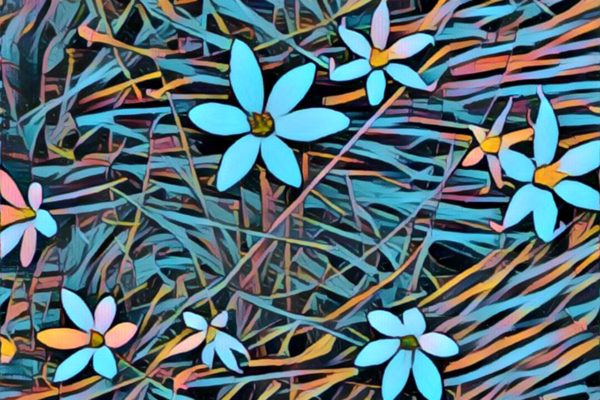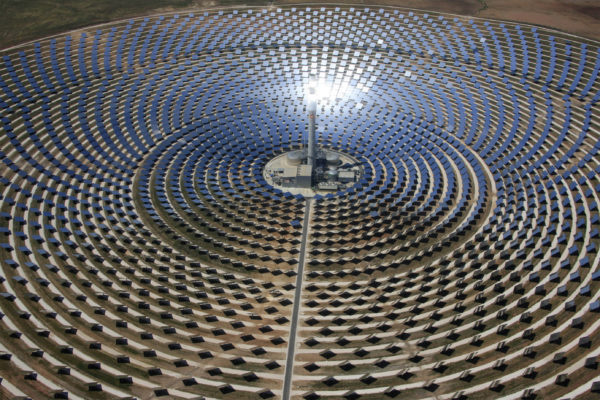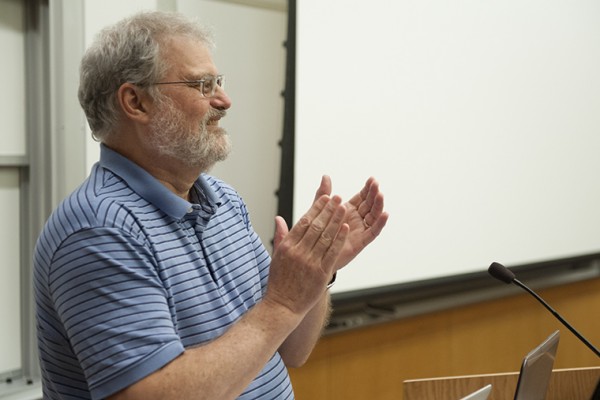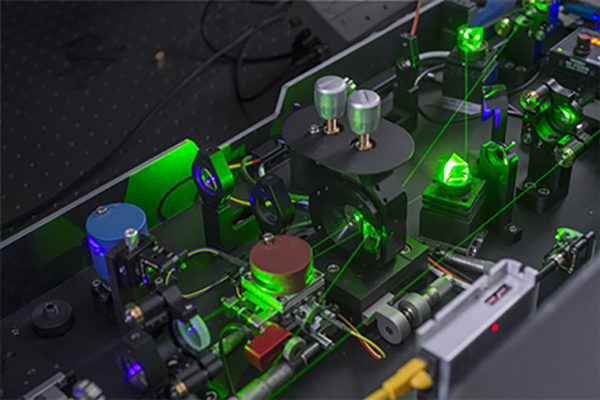Switching tracks: Understanding photosynthesis
Chemists in Arts & Sciences have re-engineered one of nature’s solar cells to drive electrons down an alternate path. This work advances the understanding of the earliest light-driven events of photosynthesis and is published in the Proceedings of the National Academy of Sciences.
Hidden green skills
What have plant scientists learned in the laboratory in the past three to five years that could be used to reduce inputs of water, chemical fertilizers and herbicides to agricultural fields?
Controlling light: New protection for photosynthetic organisms
Scientists at Washington University in St. Louis have discovered a previously unknown strategy photosynthetic organisms use to protect themselves from the dangers of excessive light, providing further insight into photosynthesis and opening up new avenues for engineering this process, which underlies the global food chain.
PARC wins renewed funding for photosynthetic research
The Department of Energy has awarded the Photosynthetic Antenna Research Center (PARC) $14.4 million for continuing research on natural and bio-inspired systems for harvesting the sun’s energy. The center, which is hosted by Washington University in St. Louis, was one of 32 projects selected for funding from among more than 200 proposals and one of only 22 to receive second-round funding.
Scientists stitch up photosynthetic megacomplex
In Science, scientists at Washington
University in St. Louis report on a new technique that allowed them to extract a photosynthetic megacomplex consisting of a light antenna and two reaction centers from the membrane of a cyanobacterium. This is the first time an entire complex has been isolated and studied as a functioning whole.
A chance to explore the hottest research topic in St. Louis
The International Society of Photosynthesis
Research, meeting this August in St. Louis, is offering an afternoon of
talks and demonstrations about the original “green” chemistry invented
by bacteria and plants and its relevance to our energy future. Intended for teachers, students and the public, “Photosynthesis in
our Lives” will take place from 3- 5 p.m. the afternoon of Sunday,
August 11, 2013 in the Parkview room at the Hyatt Regency at the Arch. RSVP to: http://parc.wustl.edu/outreachRSVP by August 7, 2013.
Turning plants into power houses
Plants are less efficient at capturing the energy in sunlight than solar cells, mostly because they have to drag along evolutionary baggage. But scientists are already thinking of creative ways to fix the inefficiencies.
DOE makes largest research award in Danforth Campus history
Washington University and the Donald Danforth Plant Science Center have received two awards totaling $35 million from the U.S. Department of Energy (DOE) to do research on novel energy initiatives. At $20 million, the Washington University research award is the largest ever received on the Danforth Campus. The $15 million for the Donald Danforth Plant Science Center is the largest the organization has ever received.
Orientation of middle man in photosynthetic bacteria described
Researchers at Washington University in St. Louis have figured out the orientation of a protein in the antenna complex to its neighboring membrane in a photosynthetic bacterium, a key find in the process of energy transfer in photosynthesis. Robert Blankenship, Ph.D., Markey Distinguished Professor of Biology and Chemistry in Arts & Sciences, led a team that for the first time combined chemical labeling with mass spectroscopy to verify the orientation. The team also included Michael Gross, Ph.D., WUSTL Professor of Chemistry, Immunology and Medicine, and Chemistry graduate students Jianzhong Wen and Hao Zhang. A paper describing this work appeared recently in the Proceedings of the National Academy of Sciences USA.
Is bacterium renewable source of energy?
A team of researchers headed by biologists at Washington University in St. Louis has sequenced the genome of a unique bacterium that manages two disparate operations — photosynthesis and nitrogen fixation — in one little cell during two distinct cycles daily.
View More Stories





